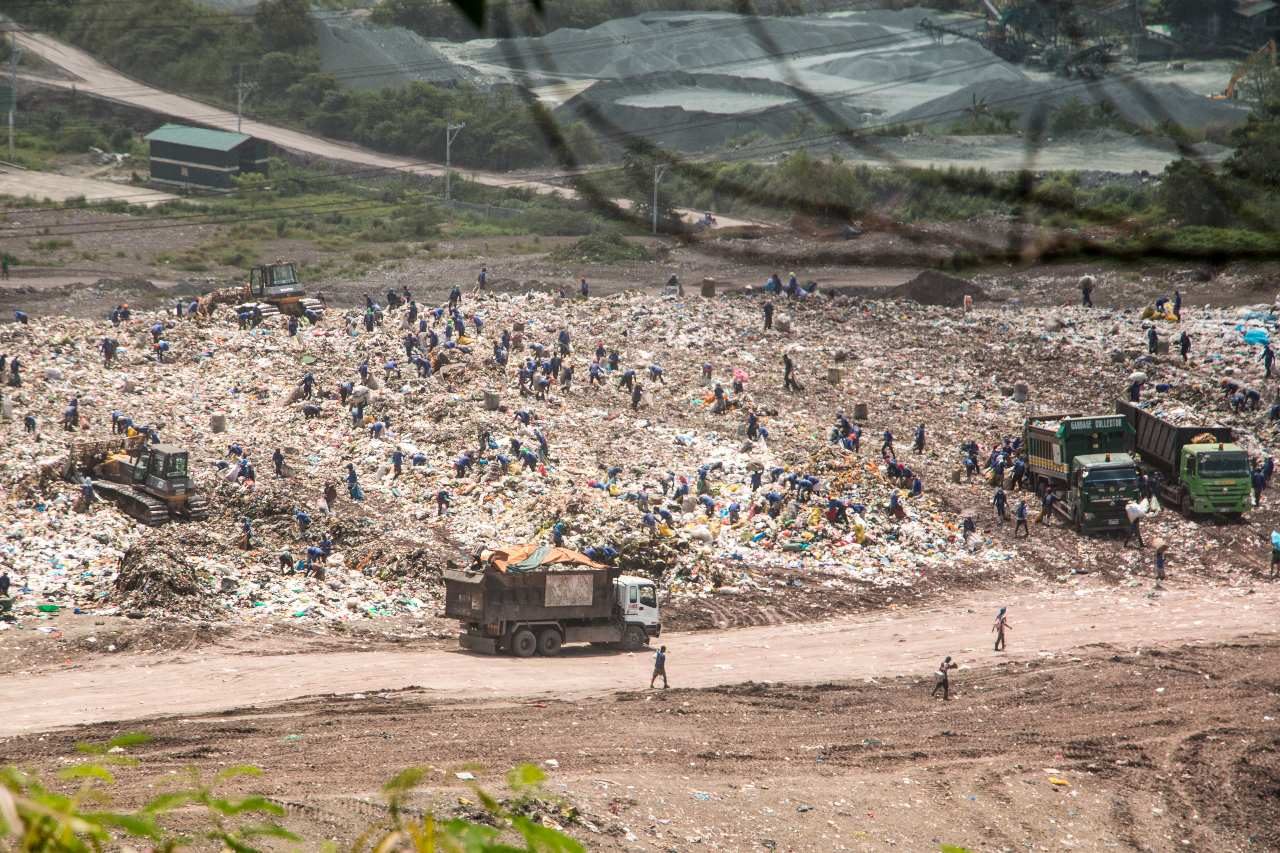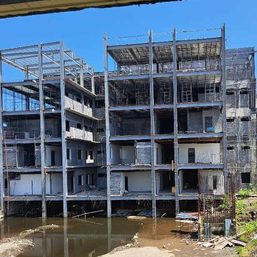SUMMARY
This is AI generated summarization, which may have errors. For context, always refer to the full article.

MANILA, Philippines – The pandemic, now approaching its third year, has left its imprint on everyday life. The carrying and use of alcohol sprays, temperature checks at malls or restaurants and all kinds of test kits at any indication of coughing and colds have now become commonplace for many Filipinos.
President Ferdinand Marcos Jr.’s Executive Order No. 7 last October allowed the voluntary wearing of face masks – both indoors and outdoors – signaling the relaxation of COVID-19 restrictions in the country.
The use of masks is required only in healthcare facilities as well as in medical and public transport. What is expected is the reduced use of face masks and other personal protective equipment (PPE) by non-essential workers.
Hospitals, however, tell a different story. On the one hand, according to the Asian Development Bank which extracted data from a South China Morning Post article in early 2020, hospitals in Metro Manila have produced on average 280 tons of waste daily.
On the other hand, CNN reported in April 2021 that according to the Department of Environment and Natural Resources (DENR), the Philippines is estimated to have generated only 51.58 tons of waste daily since the start of the pandemic in March 2020.
A global crisis
The staggering problem of pandemic waste in the Philippines alone is only part of an even bigger global waste management crisis.
The results of a study conducted by researchers affiliated with Nanjing University and published by the online journal Proceedings of the National Academy of Sciences of the United States of America (PNAS) showed that as of August 23, 2021, an estimated 4.4 million to 15.1 million tons of mismanaged plastic wastes are generated globally.
Out of these estimates, the study said 87.4%, or roughly 3.8 million to 13.1 million tons, came from hospitals, while individual PPE usage accounted for 7.6% or 1.1 million tons of total excess waste.
These wastes do not all end up properly disposed of in landfills. A story published by The Guardian on November 8, 2021, showed that an estimated 26,000 tons of plastic waste – equivalent to “more than 2,000 double decker buses” – from the COVID-19 pandemic has polluted the oceans.
Select hospital waste in Metro Manila
Back in the Philippines, a study conducted by the international nongovernment organization Health Care Without Harm in September 2021 listed the volume of waste produced by five hospitals in Metro Manila that participated in an audit.
At around that time, the Philippines reported 161,447 active cases of COVID-19, with an average of 100,000 reported cases a week. At least 2.5 million Filipinos had been infected with the coronavirus, while Filipinos aged 12-17 with comorbidities had begun to receive their vaccine doses.
The data from the audited Metro Manila hospitals were used to raise awareness about the exponentially increasing amount of waste generated during the pandemic. The numbers reported are not representative of the situation of hospitals in other parts of the country, however.
The waste in the study was divided into three categories, following the Department of Health’s Health Care Management Waste Manual: green for non-infectious wet waste such as food waste; yellow for infectious and pathological waste like used syringes; and black for non-infectious dry waste such as paper or glass. Use the drop-down menu to see how much waste each hospital department produced, as well as its types.
The study showed that the bulk of the wastes generated by the audited hospitals were infectious pathological or yellow wastes. The disproportionate numbers can be attributed to different hospitals widening their classifications of infectious wastes, to ensure that staff who work with such wastes do not come into contact with contaminated material.
The hospitals’ dietary department, in charge of providing meals and nutritional care, produced the greenest wastes (non-infectious wet wastes or biodegradable wastes) across all hospitals.
Emergency rooms, intensive care units, and wards of the hospitals produced the most yellow waste (infectious pathological wastes).
The fifth hospital cited in the study, the National Center for Mental Health, was unable to provide data on its waste volume.
Plastics: Beneficial and detrimental
The discovery and application of plastics in the medical industry were revolutionary, especially given their resistance to heat, chemicals, and bacteria. This characteristic resulted in plastic becoming one of the leading pollutants in the environment, with over 166.6 million PPE disposed of each month globally from estimations last March 2020.
Exactly what kind and how much plastic have been used by the audited hospitals? The table below lists the amount of plastic waste generated per hospital cited in the study.
It’s important to note that these counts are inconsistent with the actual wastes produced, considering the lack of coverall PPE recorded for the Amang Rodriguez Memorial Medical Center, or the Lung Center of the Philippines’ lack of a food container count.
All four hospitals had already taken steps before the pandemic to transition to reusable plastics and PPE, but these were put on hold in favor of single-use plastics. Single-use plastics lessen incidents of infection among healthcare workers, as they can be disposed of after use.
Recycling hospital waste
Even before the pandemic, recycling hospital waste was already an issue. PPE are ideally used only once, as cleaning and reusing them causes degradation over time.
There are different ways to recycle waste, with costlier methods allowing for more reusability and vice versa. If not recycled, waste must be disinfected before being sent to sanitary landfills. The most common method of disinfection is the use of autoclaves, a pressure steamer that sterilizes wastes in batches.
Incineration is an option in cases where the waste is too infectious to clean, but this is tightly regulated as it produces large amounts of harmful pollutants.
A United Nations report on COVID-19 healthcare wastes showed that non-recyclable materials are used in producing PPE. These can be replaced with biodegradable alternatives but at a cost of their reliability.
There have been efforts to use recyclable PPE, but only in limited quantities. Using fibers and natural materials allows the production of compostable face masks, with some success in filtrating pathogens.
The best way to recycle hospital waste is to use biodegradable materials in the first place. Bioplastics can be used for packaging or vaccines can be stored in larger vials. Even vaccine administration through patches or oral medication reduces the use of syringes and other PPE.
Where does waste end up?
In the Philippines, tracking whether hospital wastes are recycled is a tricky task.
Recycling plastics has been a challenge for the Philippines even before the pandemic. According to the World Bank, the Philippines recycled only 28% of key plastic resins and had an 85% recycling capacity gap in 2019.
This includes hospital wastes, which the Department of Health Waste Disposal Manual classifies as solid waste as long as they did not come from an infected source or are sharp objects.
This was changed, however, when the DENR Environmental Management Bureau made special amendments to how healthcare wastes are disposed of during the pandemic. They implemented a strict policy to ensure healthcare wastes are separated, involving a special permit to collect infectious healthcare wastes.
These wastes are hauled off by vehicles, with markings indicating what type of waste they are transporting. Both the old and new waste management policies can be seen in what waste collection services are doing.
Cleanhaul, a waste collection services provider, told Rappler that the plastic wastes they receive from hospitals are categorized as regular wastes and are usually disposed of in common disposal areas. Only hazardous plastic wastes are treated differently.
Another waste disposal service in Metro Manila, JM Eco-tech, said they do not directly handle hazardous wastes they collect from hospitals in the National Capital Region. Instead, the wastes are disposed of at the Subic Special Economic and Freeport Zone.
However, the DENR’s instructions on collecting hazardous healthcare wastes are not reflected in the DENR’s dashboard of operational sanitary landfills.
The dashboard shows the amounts of waste received daily by the three largest sanitary landfills in Luzon:
- Green Leap Solid Waste Management, Inc. – 5,538 tons
- Metro Clark Solid Waste Management Corporation – 4,000 tons
- San Mateo Sanitary Landfill Development Corporation – 2,995 tons
The dashboard does not specify what types of waste these landfills receive each day.
To effectively recycle wastes such as plastic, the country must first face the issue of proper disposal and segregation.
Apart from recycling, Health Care Without Harm executive director Ramon San Pascual told Rappler in April 2021 that people can also help lessen pandemic waste by choosing reusable PPE which could be worn repeatedly as long as they are regularly washed and disinfected.

Several green hospitals have, in fact, been doing this, he said, by using reusable hospital gowns.
“We have a lot of green hospital members who began manufacturing their own hospital gowns such that it becomes washable and can be used again after it’s dried for a day,” San Pascual said. – with reports from Sandra Benig and Kyle Nicole Marcelino/Rappler.com
Add a comment
How does this make you feel?









There are no comments yet. Add your comment to start the conversation.